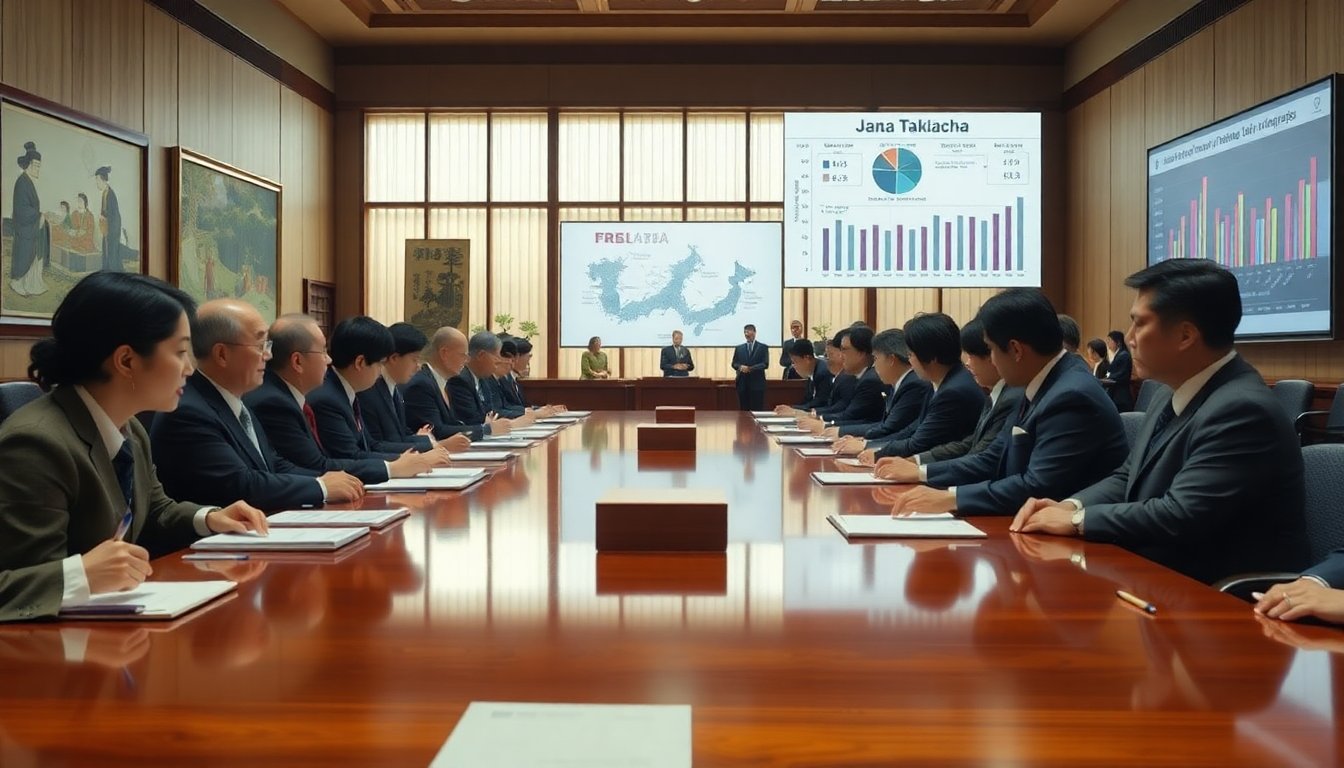Table of Contents
Japan appoints first female prime minister
Japan has marked a historic moment with the appointment of Sanae Takaichi as the nation’s first female prime minister. She officially took office on October 21, 2025, breaking barriers in a political arena long dominated by men.
Takaichi’s leadership comes at a time when Japan faces complex international relations and pressing domestic challenges.
Takaichi’s political trajectory is compelling and reflects a unique blend of influences. A fervent conservative, she draws inspiration from prominent figures such as Margaret Thatcher.
Additionally, her passion for heavy metal music adds an unexpected dimension to her persona. This eclectic mix is anticipated to shape her engagements with global leaders, including discussions with President Donald Trump on critical issues like trade and security.
The ascent of Sanae Takaichi
Sanae Takaichi, born in Nara Prefecture, emerged from a middle-class family, distancing herself from the elite echelons of Japanese politics. Her rise to power is marked by determination and a rejection of conventional expectations. Instead of adhering to societal norms, she pursued higher education and entered the political arena, steadily advancing within the ruling Liberal Democratic Party (LDP).
Prior to her political career, Takaichi expressed her independent spirit as a drummer in a heavy metal band. She performed covers of iconic groups such as Deep Purple and Black Sabbath. Even now, she maintains an electronic drum kit at home, using it as a means to relax.
This distinctive aspect of her character has shaped her public image as a disciplined yet unconventional leader.
Political beliefs and challenges
As prime minister, Takaichi encounters significant challenges on both domestic and international fronts. Her views on defense are particularly noteworthy, as she is recognized for her hawkish stance towards China.
Analysts indicate that her alignment with U.S. interests is likely to strengthen bilateral relations, especially amid rising tensions in the Asia-Pacific region.
Takaichi’s policies also reflect a commitment to revising Japan’s post-war pacifist constitution, a goal that resonates with her political mentor, the late Prime Minister Shinzo Abe. Her approach to economic policy continues the legacy of Abenomics, emphasizing fiscal expansion, although her methods may diverge from the austerity measures that characterized Thatcher’s tenure in the UK.
Gender and politics in Japan
As Japan’s first female leader, Seiko Takaichi has garnered attention for her historic role. However, her perspectives on gender issues have sparked debate. While she acknowledges the significance of equal opportunities, her conservative views often clash with the progressive expectations associated with her position. Notably, she opposes same-sex marriage and endorses traditional family structures.
During a recent press conference, Takaichi reiterated her commitment to providing opportunities for all citizens. However, her cabinet’s composition has drawn criticism, as only two out of 19 ministers are women. This disparity raises questions about her commitment to promoting women’s rights in Japan’s traditionally male-dominated political landscape.
Economic priorities and future outlook
Japan’s economy faces significant challenges as Sanae Takaichi steps into her new role. The nation is currently dealing with rising inflation and a declining yen, which are impacting consumer purchasing power. Takaichi’s immediate focus is on implementing targeted fiscal measures to support vulnerable populations.
Looking ahead, her long-term economic strategy will require careful planning. Japan’s demographic shifts, particularly an aging population, present challenges for both the economy and healthcare systems. Addressing the declining birth rate and increasing elder care needs will necessitate innovative solutions and a reassessment of immigration policies.
Sanae Takaichi’s rise to prime minister represents a pivotal moment in Japan’s political landscape. Her unique combination of heavy metal enthusiasm and conservative politics introduces both opportunities and challenges as she aims to reshape Japan’s position in the global community.





